The parasol mushroom (Macrolepiota procera) is a forager favorite – it’s enormous, often appears in great numbers, and is scrumptious. However, this fine edible mushroom has a troublesome lookalike (whyyyy, oh whyyy!). Before you forage parasol mushrooms for eating, you must be 100% sure of your identification. It’s not super complicated, but it does take some careful attention to detail.
Because of the potential for a mix-up with a toxic lookalike, this mushroom is best for intermediate foragers and not beginners.
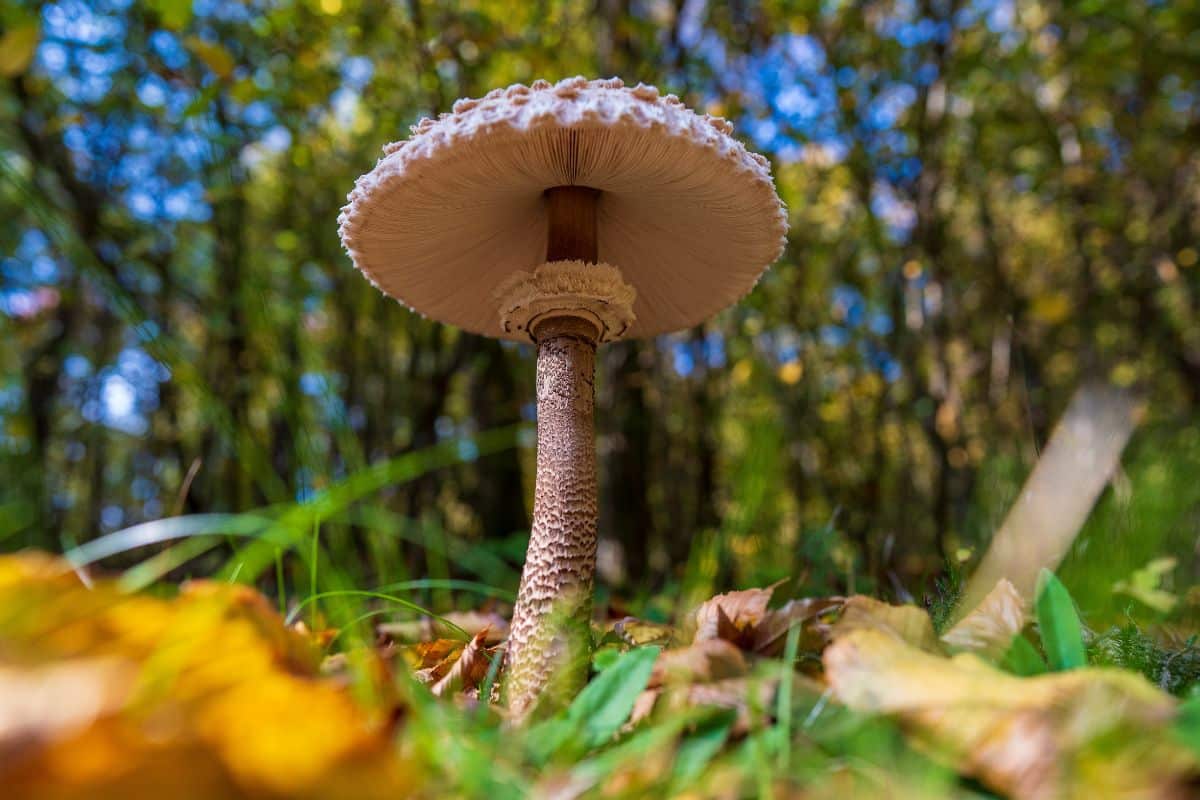
Jump to:
Parasols, Shaggy Parasols, False Parasols, and Shaggy Manes, OH MY
There are several edible mushrooms with very similar common names: Parasols (discussed here), False Parasols (the vomiter), Shaggy Parasols, and Shaggy Manes. They are not the same mushroom! Shaggy parasols and parasol mushrooms are very similar in appearance. In fact, not that long ago, they were thought to be in the same genus. It’s pretty easy to get these two confused.
On the other hand, Shaggy Manes are only superficially similar to parasols and shaggy parasols. They’re easy to differentiate once you know what to look for. However, due to their common names, shaggy manes and shaggy parasols often get confused or mixed up as to which is which.
False parasols, unfortunately, look incredibly similar to parasols. This is the problematic species, as it will make you quite ill. It’s not deadly, but you might wish you were dead after eating it — severe gastric upset is just one of the joyous side effects of eating this mushroom.

All About Parasol Mushrooms
Parasols earn their name by looking like parasols (umbrellas). At full maturity, the caps are as big as dinner plates, or even bigger, with a slender stalk holding them up. It’s not a big enough umbrella for a human, but perfect for the little field mouse or beetle who wants to stay dry!
In Europe, the parasol mushroom is especially valued and sought-after due to its size and culinary versatility. It is also a reliable grower, a mushroom you can depend on returning every year. Also, the toxic lookalike that North Americans must be wary of is very rare in Europe. This means, of course, that they don’t have the same worries we might have here.
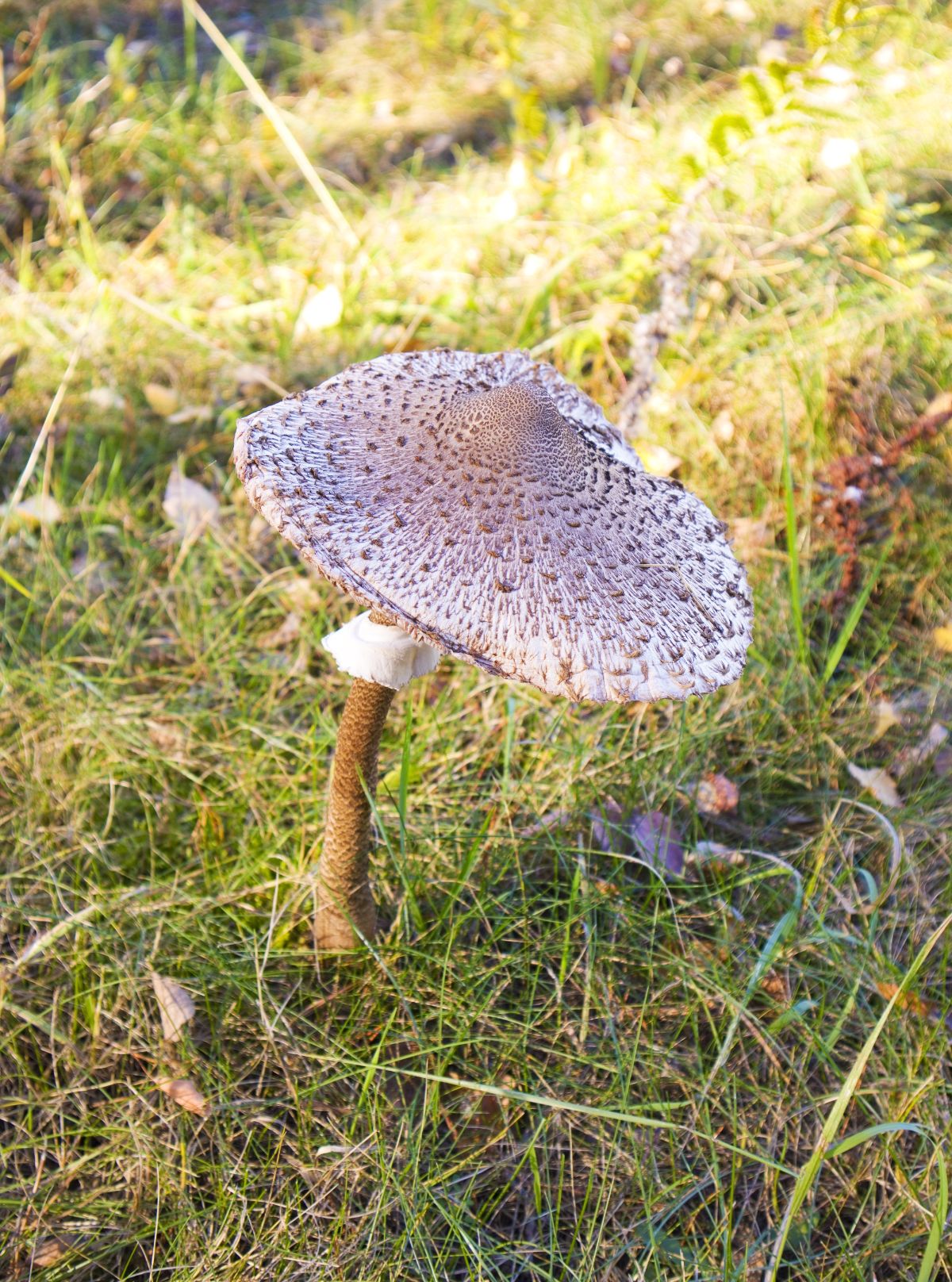
However, the lack of toxic lookalikes is also a reason why there are so many poisonings in North America. Europeans that come here and see their familiar fungi friend, or what they think is it, harvest it for the table. For many, the toxic lookalike Chlorophyllum molybdites is unknown, and they only become aware after it is too late. Thankfully, C. molybdites isn’t deadly, but it is not a pleasant experience to have!
It is likely that in North America, there are more than one parasol species. Currently, all parasol-like, procera-like species are under the name Macrolepiota procera. Don’t be surprised if this all changes as soon as some in-depth research and DNA analysis is done.
This is one of the reasons it is important to practice good citizen science and record finds on Mushroom Observer or iNaturalist. And, if you can, preserve the specimens in an herbarium for future analysis. Your individual submissions may not seem that critical, but they truly are. Mycologists conducting species research often go back 100+ years to herbarium species in an attempt to untangle some deep mycelial mysteries.
Macrolepiota procera is extremely common in most parts of Europe.
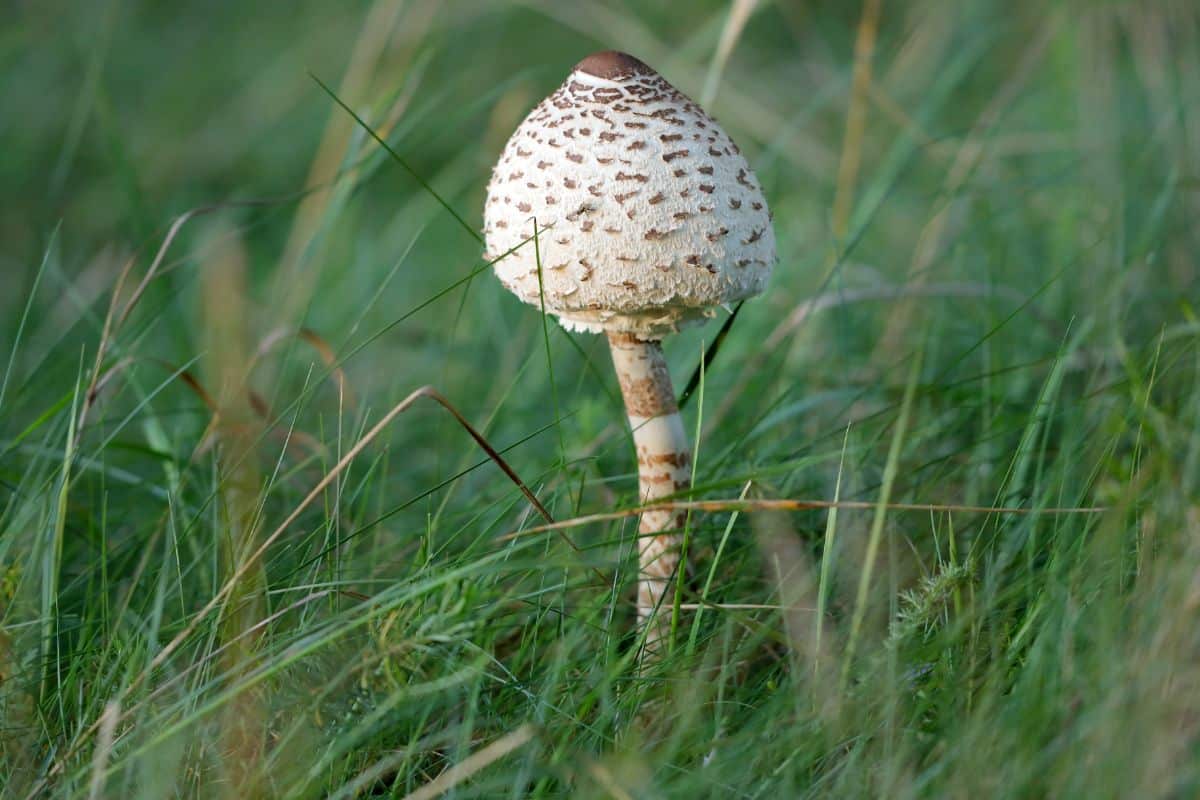
A Bit of Parasol Mushroom Folklore
Due to their long-term popularity in Europe and beyond, and their significant size, parasol mushrooms have found their way into several folktales. The fact they they often grow in vast fairy rings helps, too. Scottish legend says that fairies use parasol mushrooms as dinner tables. In Wales, the fairies use the parasol mushroom as an umbrella. Do you know of any other folklore about these massive wild mushrooms?
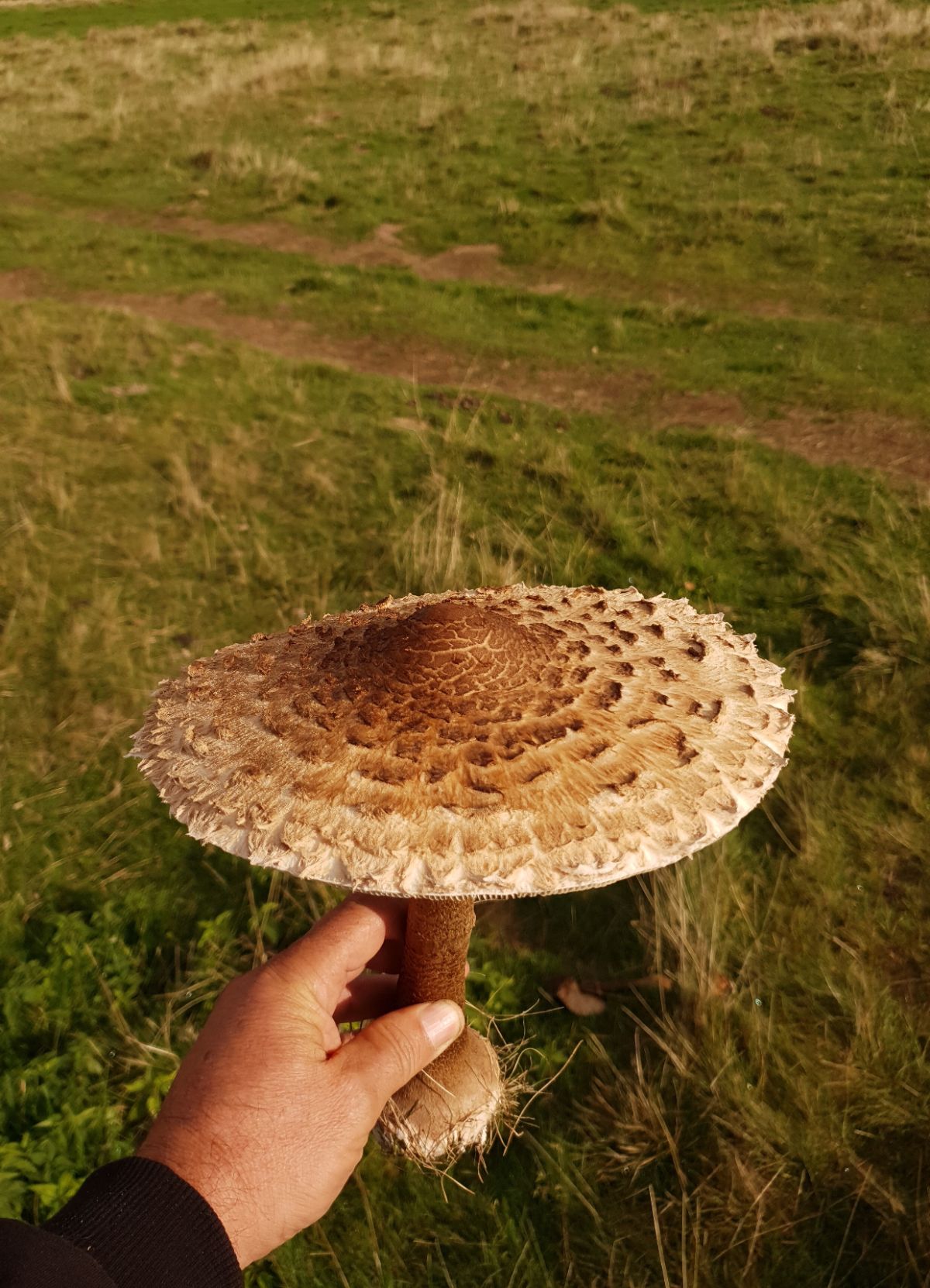
Identification of Parasol Mushrooms
Season
Late summer into autumn.
Habitat
The parasol mushroom likes open spaces, particularly fields, old pastureland, roadsides, meadows, trail sides, disturbed land, and lawns. They often appear in dense numbers, scattered throughout a grassy area. Parasols like to form fairy rings, too.
These mushrooms always grow singularly, never in clumps or overlapping. Many times, though, they will be in close proximity to each other. If you see one, be sure to look for others. Although they’re so tall, you’ll probably see them without any issues!
Parasol mushrooms grow widely across North America, but they are more common east of the Rocky Mountains.
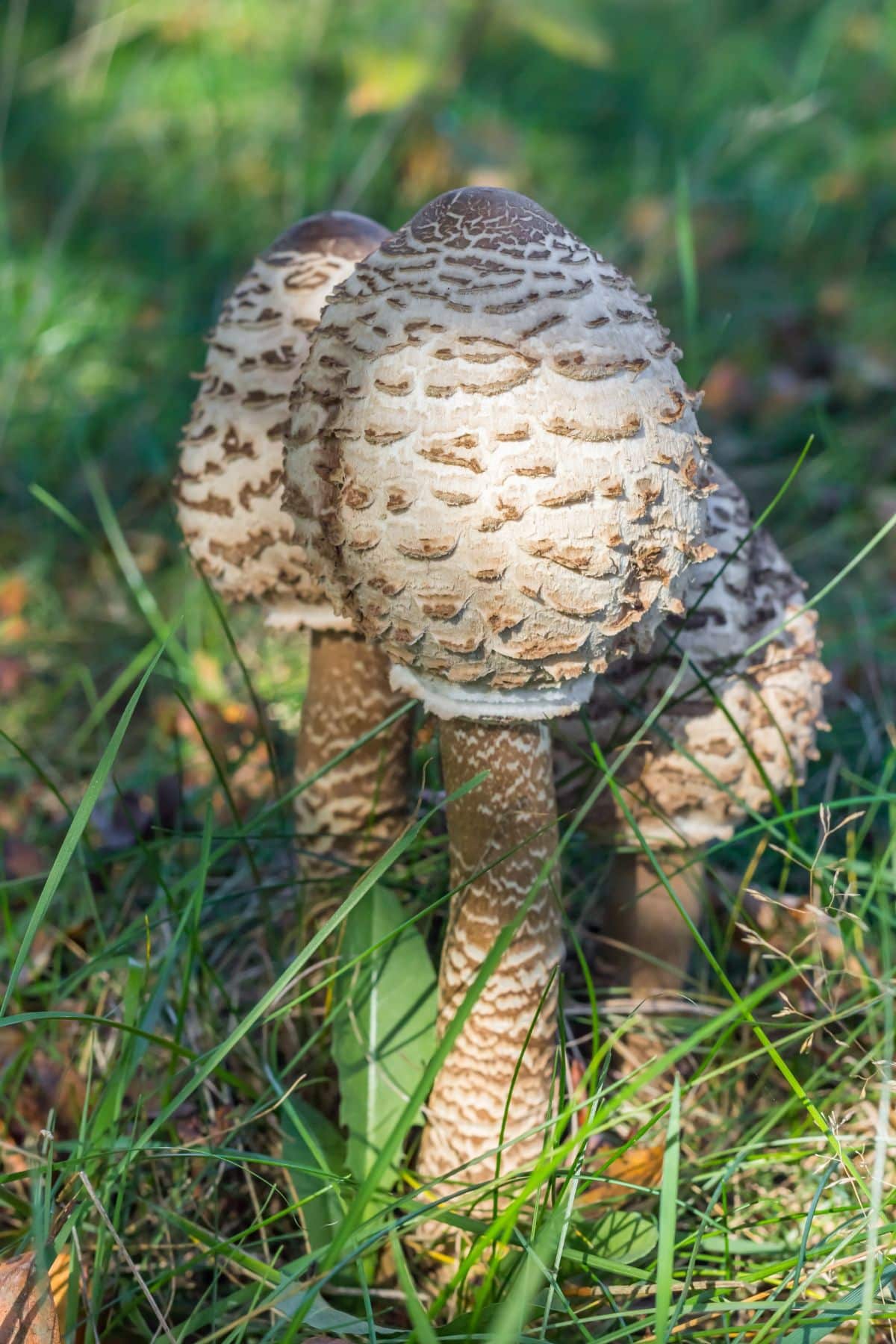
Parasol Mushroom Identification
The word “procera” means tall, which is a great way to describe the very stately parasol mushroom.
Caps
Parasol mushroom caps start out as pale brown spheres atop a slender stem. This stage doesn’t last long, for as soon as the mushroom starts to grow, it breaks the brown outer skin (veil) to show off its bright white color underneath. Remnants of the outer brown veil skin remain on the cap as dots, scales, and decorations.
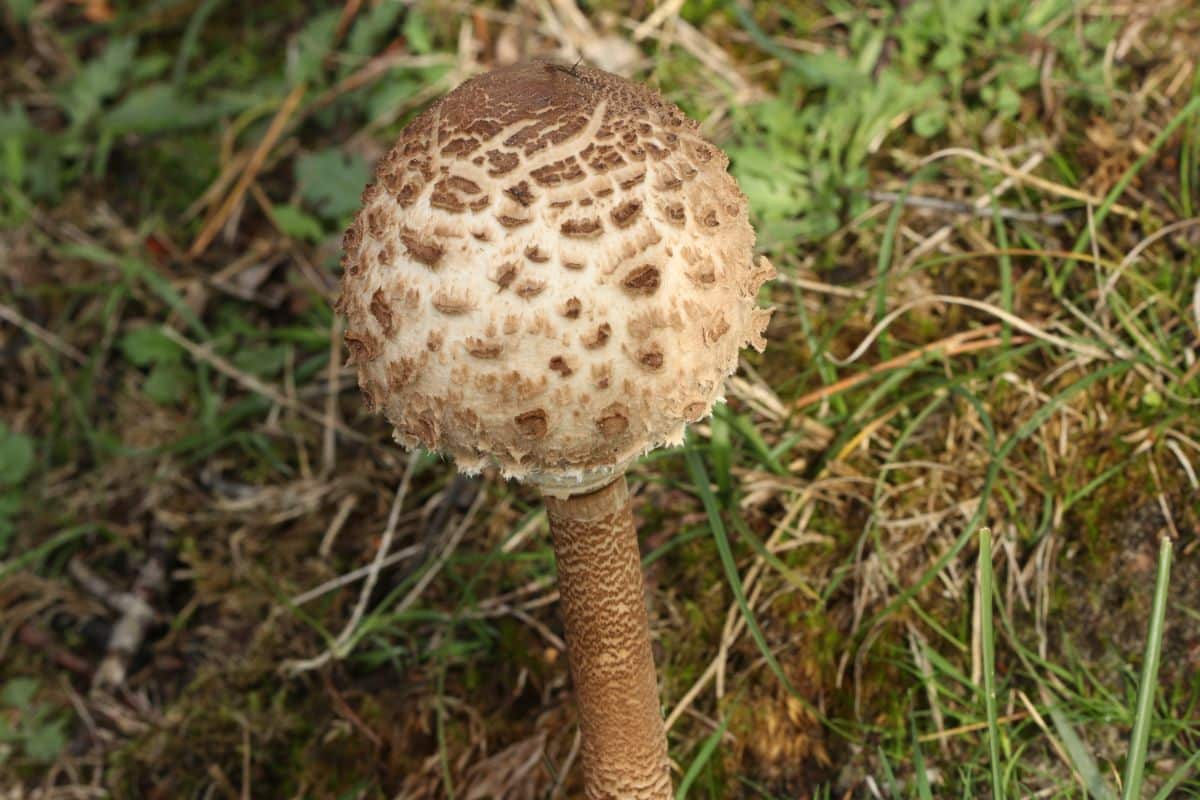
The next growth stage of the cap is as a white, rounded, egg-shaped ball with many flecks of brown covering it. Then, as it matures, the cap opens up to its full umbrella parasol shape, rounded around the edges at first but then flattening out entirely. The caps average 3-10 inches wide at full maturity, but they can get up to 15 inches wide!
The pale to deep brown specks and scales spread out unevenly, but they tend to be arranged in a somewhat concentric circle around the center of the cap. At the top center of the cap is a chocolate-brown, upraised bump called an umbo. This center bump is leathery to the touch and a focal point for the rest of the cap as it morphs and matures. Some scales may fall off with growth or during heavy rains, but they rarely disappear entirely.
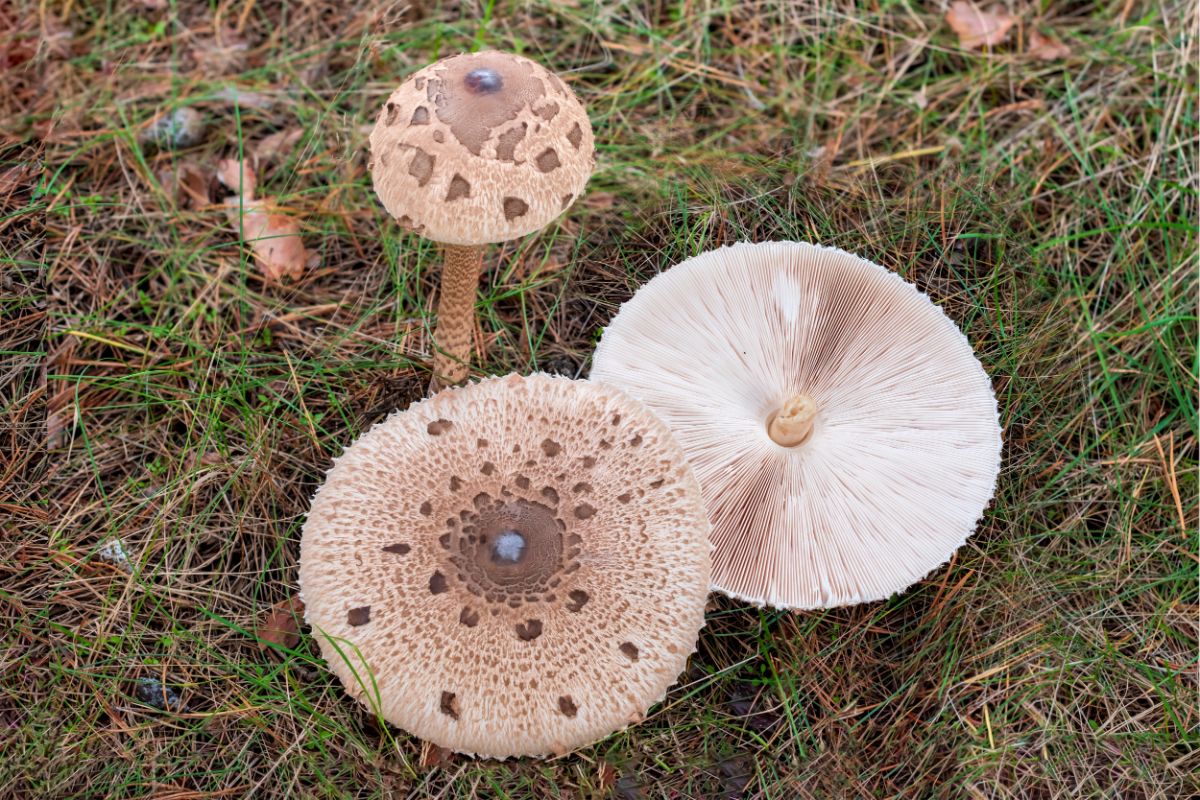
Gills
Parasol mushroom gills are white and crowded together. Sometimes, they have a pale pink tinge. When the mushroom first emerges, the gills are covered by the brownish universal veil skin and cannot be seen until the veil is broken with maturity.
Stem
The parasol stem is distinctive and a distinguishing identification point. It is tall and slender, with a bulbous bottom. But the real noteworthy aspect of this whitish tan stem is the brown snakeskin-like decoration that covers it entirely. The snakeskin look is unique to this mushroom. In some parts of Europe, the parasol is known as “snake’s hat,” or “snake’s sponge.” We like to imagine this mushroom as a wide-brimmed hat covering a snake’s body, like a celebrity trying to hide from the paparazzi.
Parasol stems are fibrous and often hollow; they don’t break or snap easily. Around the upper portion of the stem is a white double skirt (think petticoats). This skirt slides up and down the stem easily; it is not steadfastly attached to one part of the stem. In fact, the skirt may be found fallen to the base of the stem. The skirt is leftover from when the universal veil covered the newly emerging mushroom.
The stem of the parasol mushroom is usually as long as the cap is wide, averaging 3-10 inches tall. However, it may reach up to 15 inches tall.
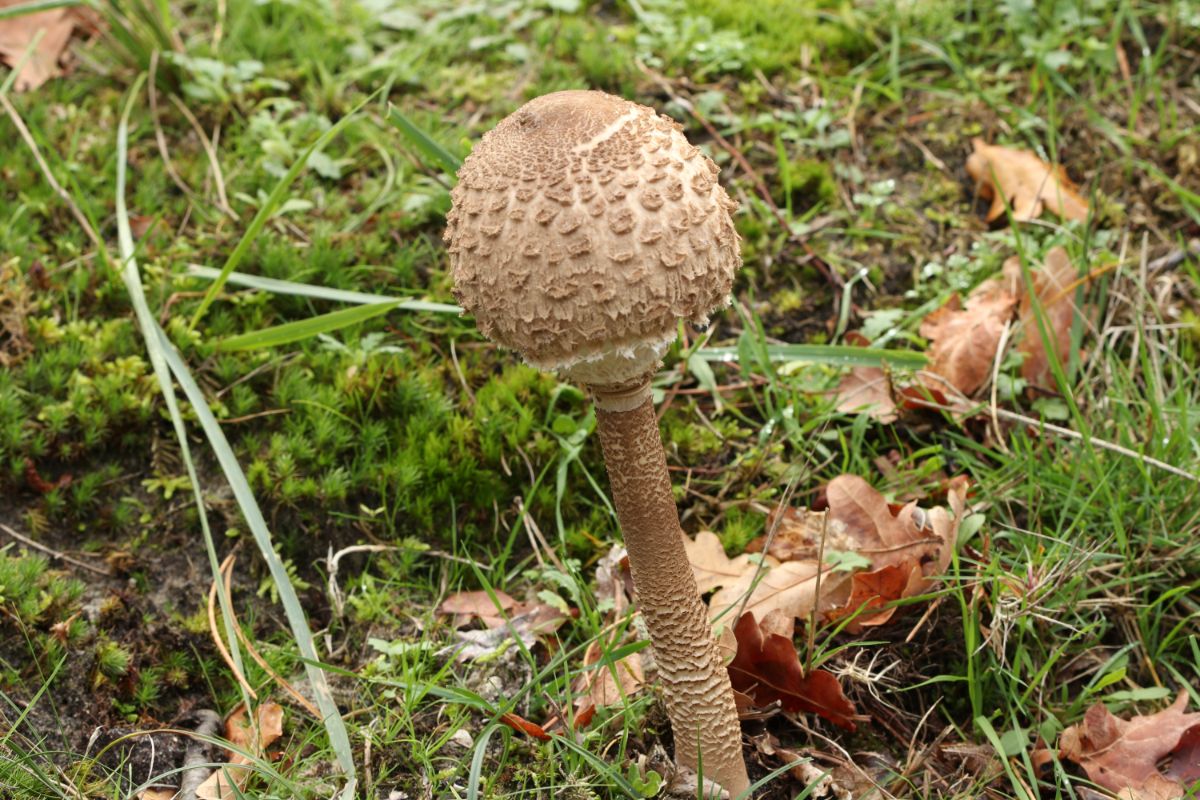
Flesh
The flesh of the parasol mushroom is white, soft, and substantial. When cut, it may turn pale pink, but it is not always apparent or obvious.
Spore Print
White
On The Lookout
During the button stage, when the parasol is all brown, it can be overlooked because it blends in with its surroundings. However, it is virtually impossible to miss as soon as it starts to develop and reach its parasol-like potential. Not only is it tall, standing out in the grass, but the cap is wide and considerable. Finding these fantastic edible mushrooms is like stumbling across a set of white and brown dinner plates growing in the field.
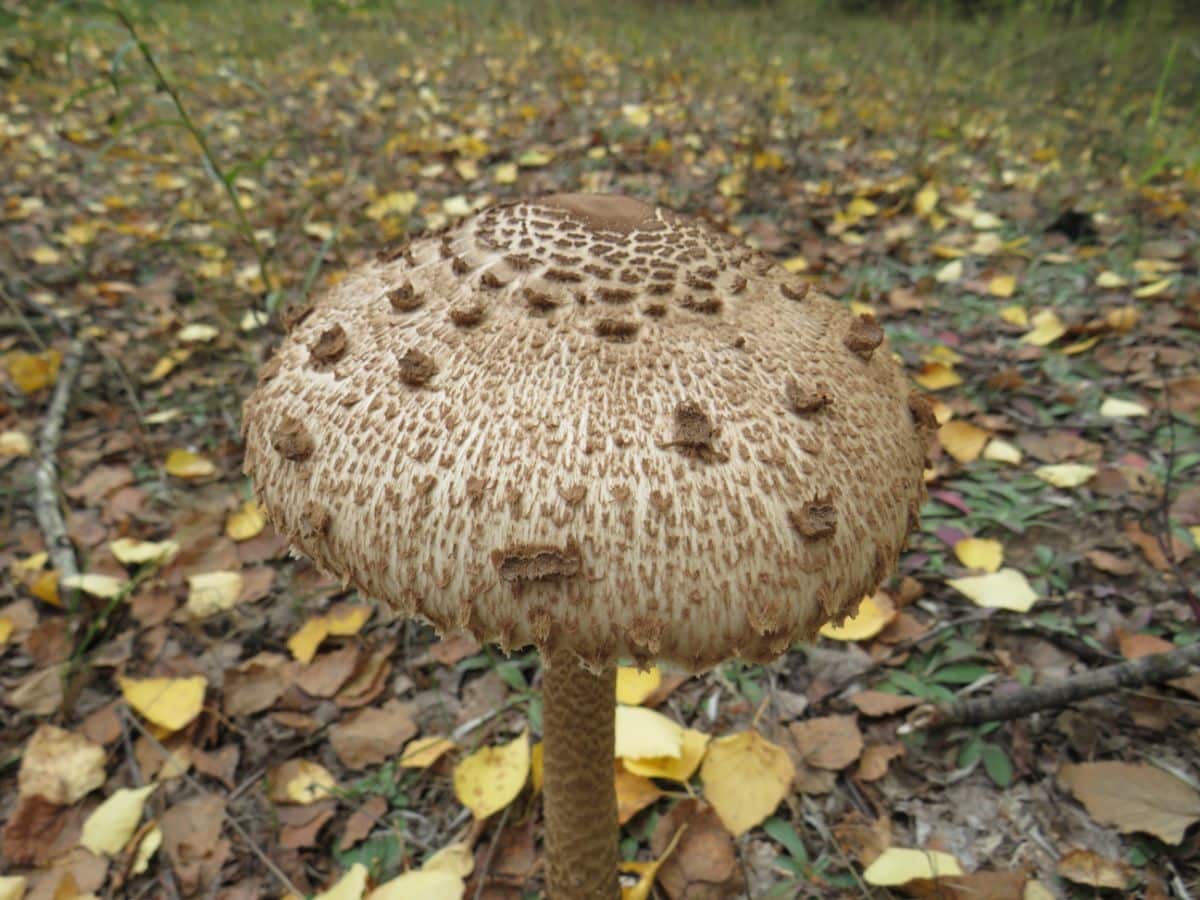
Parasol Mushroom Lookalikes
The parasol has several lookalikes. The false parasol, aka the vomiter, is problematic, to say the least. False parasols are rare in Europe, so many people (and non-North American websites) don’t mention it because it’s not an issue. However, for North Americans, you must be vigilant for this common, sizable, and remarkably similar mushroom that will make your gastrointestinal system wish it were dead.
Thankfully, there is a telltale sign to differentiate the two – the snakeskin stem! False parasols have bald, undecorated stems. If there is any question, though, you should do a spore print. That is the second guaranteed method for telling the two apart. False parasols have a greenish spore print, while the parasol has a white spore print. Learn more about false parasol mushrooms here.
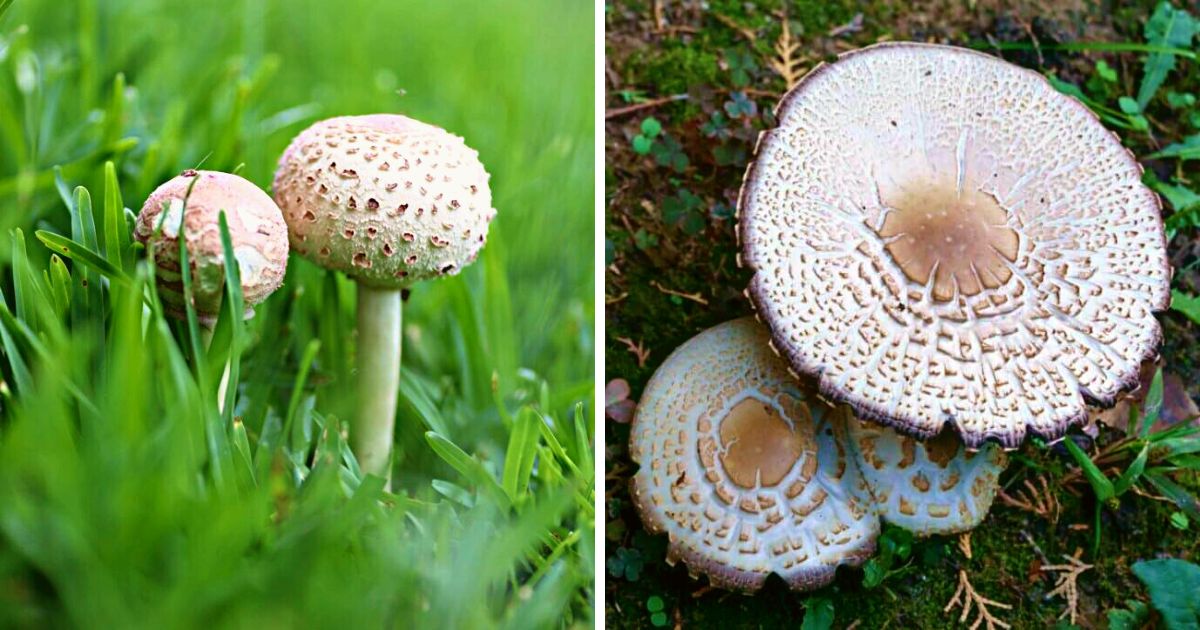
The second lookalike is the shaggy parasol mushroom. This mushroom, like the false parasol, has a bald, undecorated stem, in contrast to the parasols snakeskin stem. Both the shaggy parasol and parasol mushrooms have white spore prints, so that can’t be used to tell them apart. The shaggy parasol is an edible mushroom, so if you do find this one, harvest it. Learn more about the shaggy parasol here.
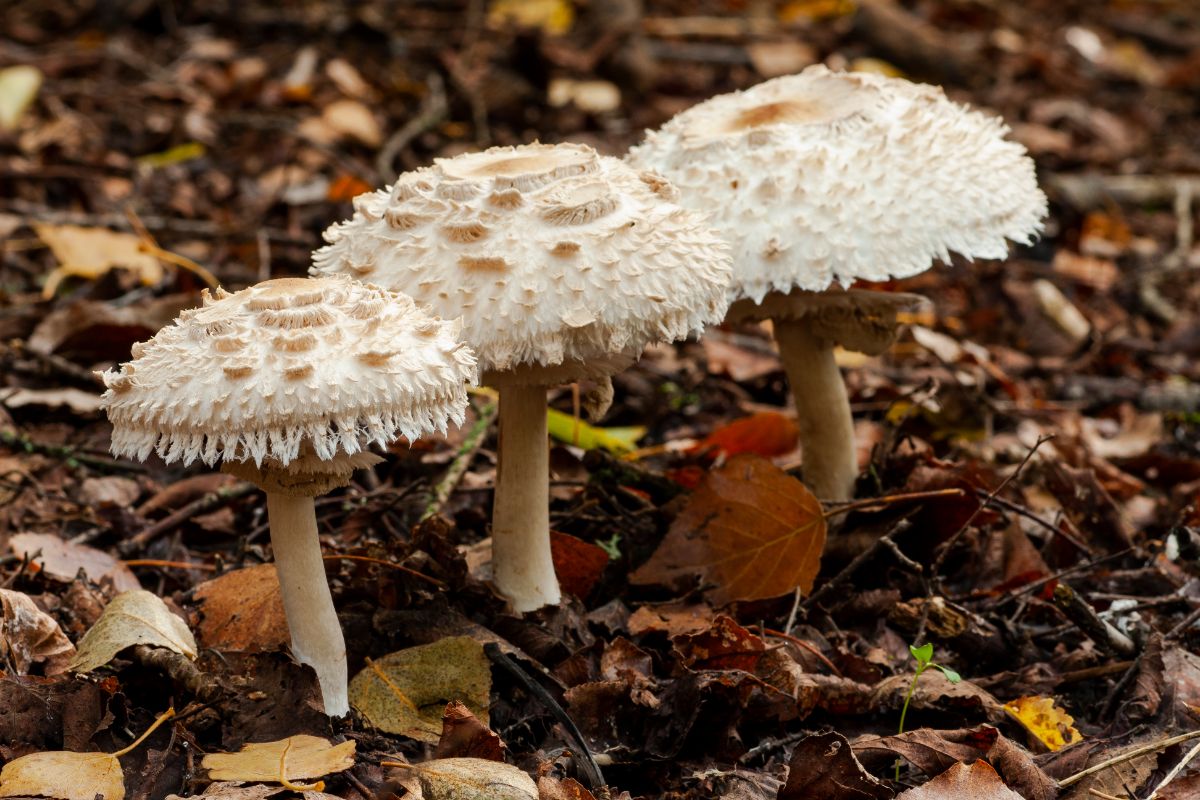
The third lookalike for the parasol mushroom is the shaggy mane. This mushroom doesn’t look as much like the parasol as the other two previously mentioned. Shaggy manes are white with shaggy decorations on their cap, but their caps are elongated, looking more like tubes than golf balls. They also have a bare stem, no snakeskin pattern. Check out our in-depth guide about shaggy manes here.
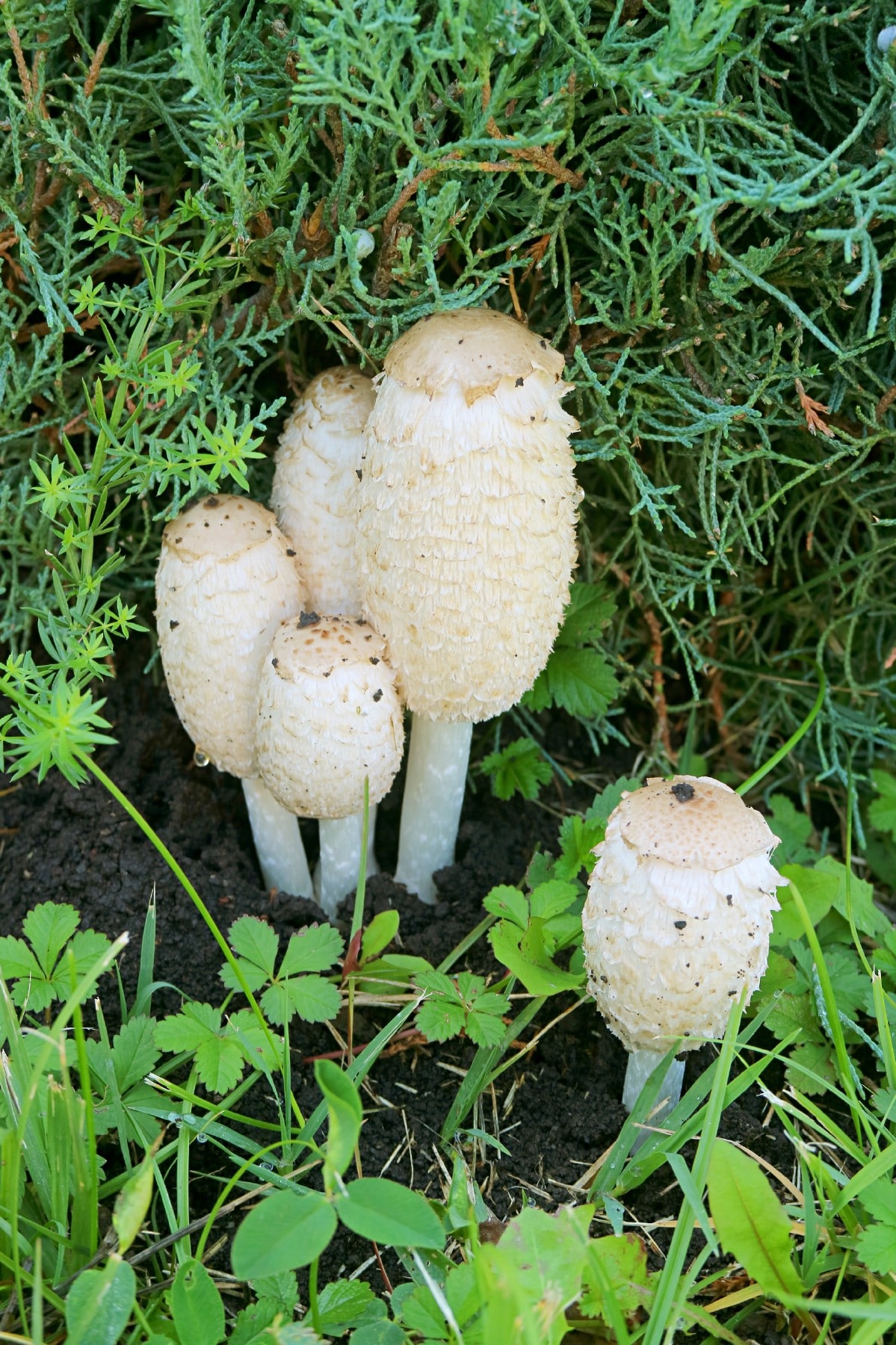
Cooking With Parasol Mushrooms
The most popular way to prepare the parasol mushroom is a simple saute with butter. Another popular method is to bread and fry the large cap, like a cutlet. In Slovakia, mushroom lovers stuff the massive caps with pork, oregano, and garlic and bake them. Stuffing and baking the caps is also popular in Italy and Austria.
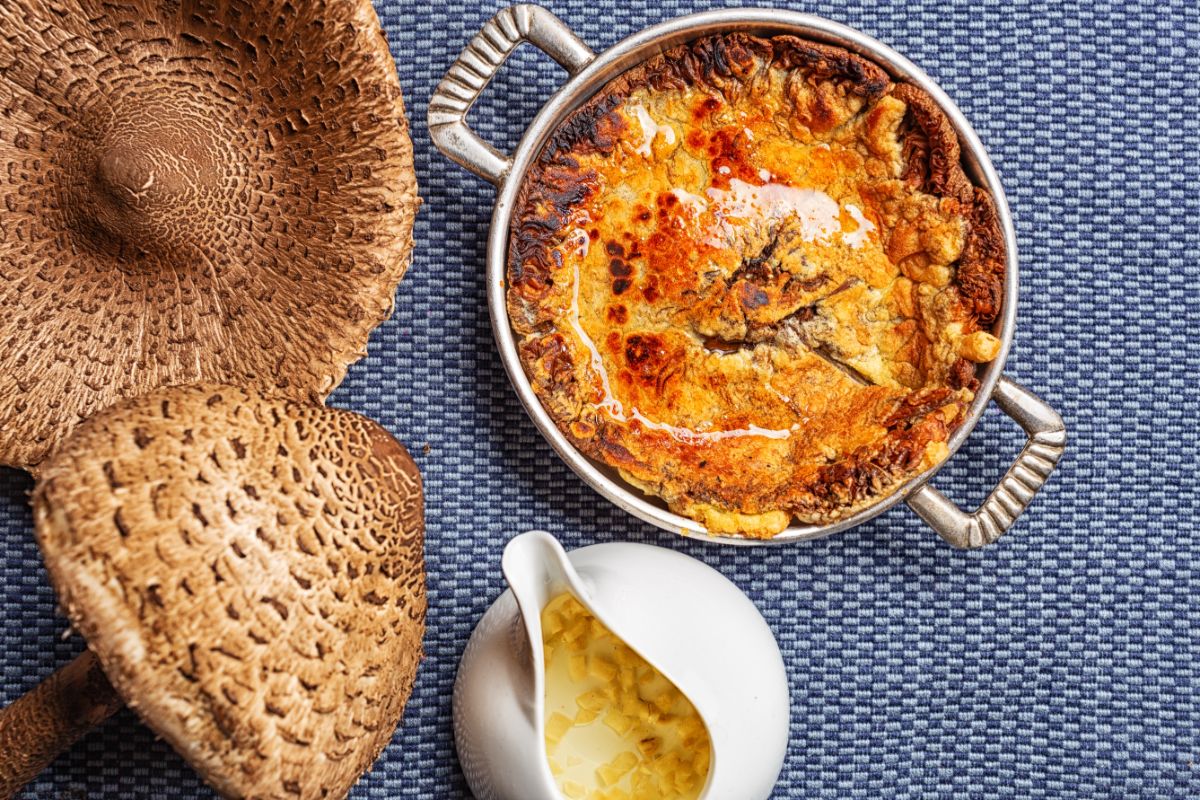
Parasol caps have many uses, but the stem should be removed and discarded. It is fibrous and unpalatable.
Parasol Mushroom Recipes:
- Fried Parasol Mushrooms
- Deep Fried Parasol Fritters
- Parasol Mushroom Caps Stuffed With Wild Rice
- Wild Mushrooms Stuffed with Ricotta
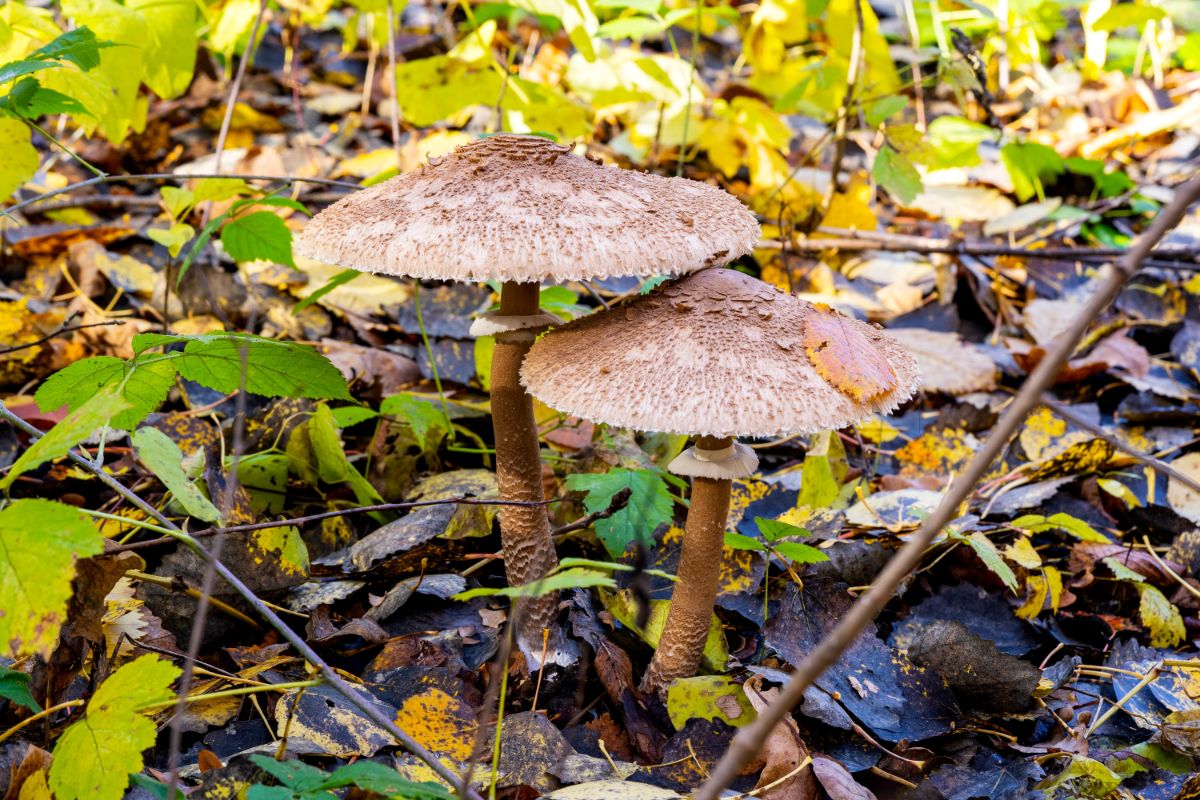
Common Questions About Parasol Mushrooms
Can I grow parasol mushrooms at home?
Yes, you can, but it’s a little complicated. Not an easy one to cultivate, and it must be done outdoors. There isn’t much documentation about growing parasols. Some folks mention there are instructions in Paul Stamets Mycelium Running, but otherwise, not a popularly cultivated species.
What does the parasol mushroom taste like?
The answer to this probably depends on the ones you find — mushrooms tend to develop slightly different flavors and aromas depending on where they grow. Some people say nutty and umami, while others note a sweet, maple syrup like flavor and smell. However you describe it, these are a delicious mushroom!

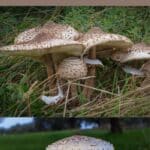
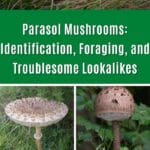
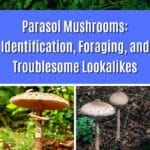
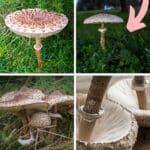

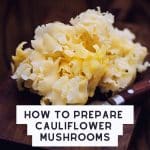
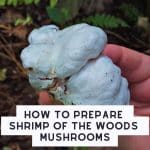
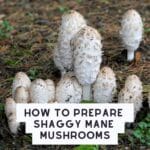
Todd says
Thank you, just learning the parasol-adjacent areas, trying to identify what I am now fairly confident is a Macrolepiota procera and this is a super helpful walk-through.
Dave says
Ok so I have parasols emerging in my greenhouse, in fact one emerged this spring, andnormally late August. The ID according to your data tells they are edible. A 24hr spore print starts out brown on the edges and the centre where the stem is attached is white. It’s the stem I’m baffled with. There is snake skin like surface at the base but smooth on the upper section , darkening brownish fading to grey like near the cap,hollow yes, brittle and string like yes, large vulva at the base yes. Cap on this one is about 10” in diameter.
Could the lack of snake skin type stem be do to the growing conditions of well mixed organic bed soil and different from that of meadow natural soils ?
Jenny says
Can you submit photos to our facebook group? Seeing it will help a lot https://www.facebook.com/groups/340690111324762